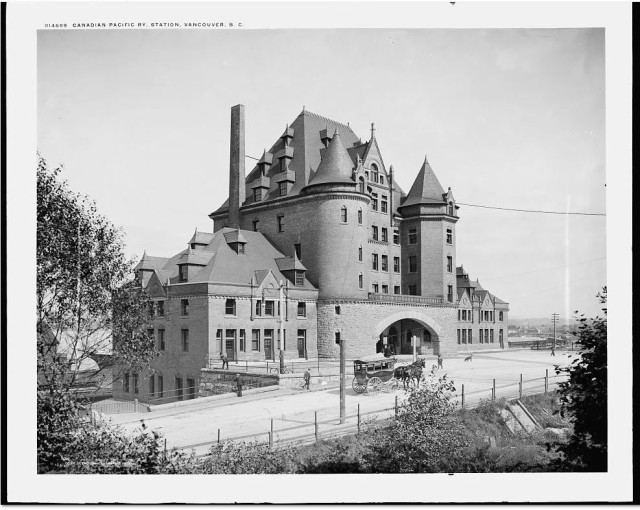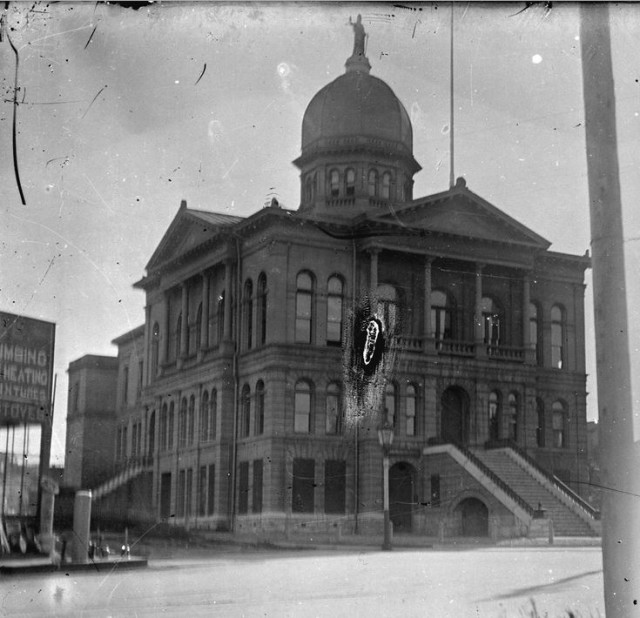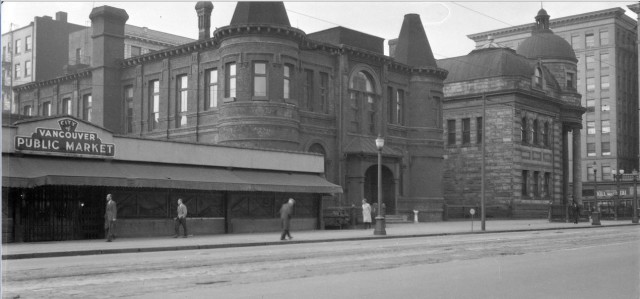The first CPR station sat at the foot of Howe Street and operated between 1887 and 1914.

The First Transcontinental Train:
The first transcontinental train arrived in Vancouver on May 23, 1887. Businesses closed for the afternoon, city council adjourned, the city band and fire brigade led a parade of hundreds to the station. The Mayor arrived in Vancouver’s only horse-drawn cab to meet the train at the Canadian Pacific Railway station at the foot of Howe Street.
From Vancouver Exposed: Searching for the City’s Hidden History
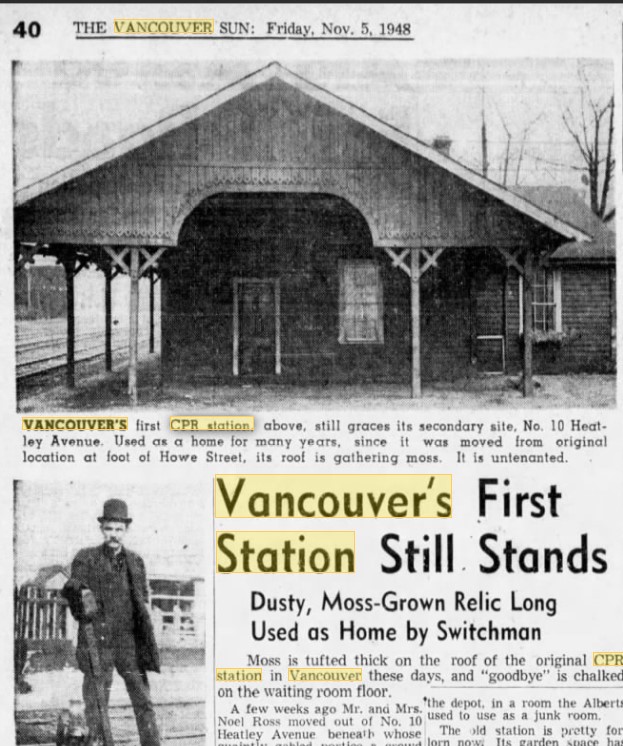 The First CPR Station:
The First CPR Station:
A simple, two-story, red wooden structure, the station served Vancouver for the next 12 years. When its replacement opened, the CPR hauled the station down the tracks to the foot of Heatley Street, and handed it over to William Alberts. Alberts, one of the original CPR switchmen, was involved in a workplace accident in the late 1890s. He lived at the station rent free for the rest of his life, which proved to be quite long. He died in 1948 at the age of eighty.
William and his wife Isabella raised their three children at their station house. When their daughter Irene and her husband Noel Ross returned the house to the CPR after her father’s death, a Vancouver Sun reporter and photographer were there to record it. The reporter noted “the moss-covered roof’ and the “goodbye” that had been scribbled on the former waiting room floor which still had the original benches and stove, as well as the former garden that had been consumed by railway tracks. Irene told him she’d watched the troop trains come and go in both world wars and said that she was so used to train whistles and bells that she never heard them.

The little station/home outlived the second CPR station, which for a time, dominated the foot of Granville Street. It was a gorgeous piece of architecture in the Chateau style, but didn’t even make it to its fifteenth birthday.
Our current Waterfront Station opened in August 1914, and against all odds, so far survives.
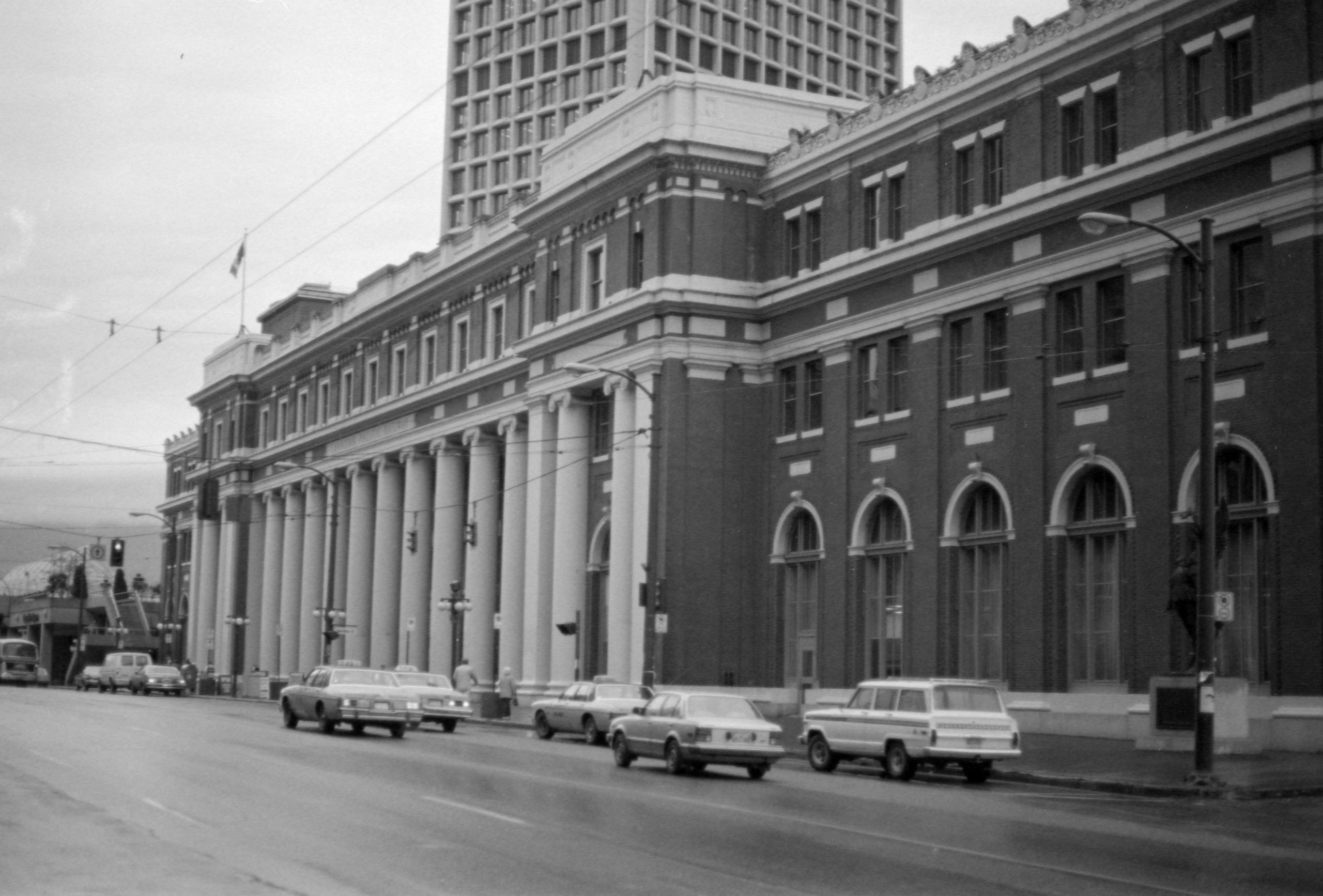
© All rights reserved. Unless otherwise indicated, all blog content copyright Eve Lazarus


